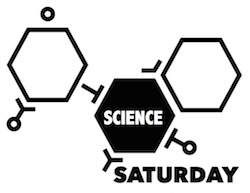 In Vermont, in the winter, we talk about the weather. A lot. Perhaps this is due to our agrarian roots and realities. Maybe it is an extension of how we look for each other. Or maybe it’s because it is really, really cold. Mars cold. Whatever the reason, it is a very common topic for discussion. Which makes it a great entry point for a STEM-centered lesson, unit, or project. And conveniently, there are a number of weather apps that serve as a great way to collect real-world data. Today we are going to consider bringing the weather into your classroom, or, perhaps, taking your classroom out to it.
In Vermont, in the winter, we talk about the weather. A lot. Perhaps this is due to our agrarian roots and realities. Maybe it is an extension of how we look for each other. Or maybe it’s because it is really, really cold. Mars cold. Whatever the reason, it is a very common topic for discussion. Which makes it a great entry point for a STEM-centered lesson, unit, or project. And conveniently, there are a number of weather apps that serve as a great way to collect real-world data. Today we are going to consider bringing the weather into your classroom, or, perhaps, taking your classroom out to it.
Natural Disasters in the Classroom
 When I was still teaching high school, I was presented one quarter with the option of creating and teaching a science elective. Looking at what my department offered, I noticed a lack of courses that explored the earth sciences. At the time I was getting really interested in weather, and so I created a course called “Weather and Climate.” As you might imagine, students did not exactly flock to the course. Those that did come had a rich learning experience; we structured the course around three large projects, and for our climate change unit we built a setup with an exhaust catcher, specific heat monitor, and CO2 sensor and burned a bunch of different fossil fuels. I felt it was a strong class, but was disappointed that not many students chose to take it. The next year, I expanded the scope of the class, and retitled it: “Natural Disasters.” The student response was… much better. Today I’d like to talk about some of the student-centered learning that can happen when students engage with natural disasters. Continue reading “Natural Disasters in the Classroom”
When I was still teaching high school, I was presented one quarter with the option of creating and teaching a science elective. Looking at what my department offered, I noticed a lack of courses that explored the earth sciences. At the time I was getting really interested in weather, and so I created a course called “Weather and Climate.” As you might imagine, students did not exactly flock to the course. Those that did come had a rich learning experience; we structured the course around three large projects, and for our climate change unit we built a setup with an exhaust catcher, specific heat monitor, and CO2 sensor and burned a bunch of different fossil fuels. I felt it was a strong class, but was disappointed that not many students chose to take it. The next year, I expanded the scope of the class, and retitled it: “Natural Disasters.” The student response was… much better. Today I’d like to talk about some of the student-centered learning that can happen when students engage with natural disasters. Continue reading “Natural Disasters in the Classroom”

